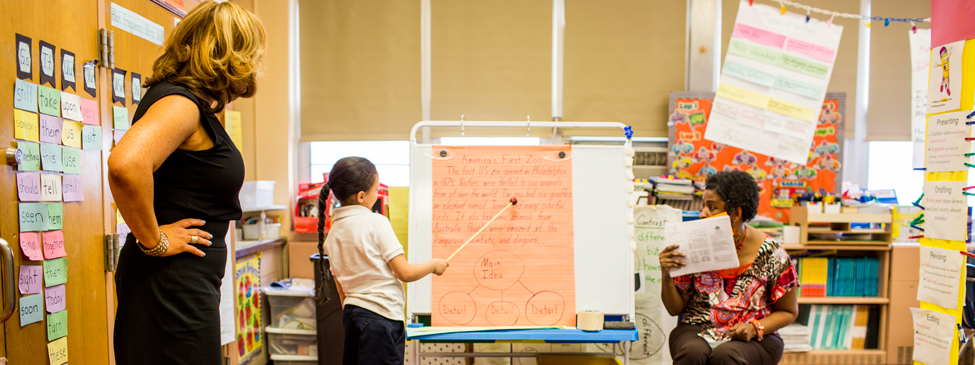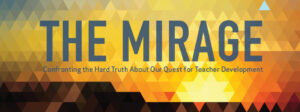Teacher evaluation is old news. If you’re reading this, you’ve probably heard the arguments on both sides of the issue so many times that you can recite them by heart.
On one side, there’s the idea that evaluation systems based on multiple measures, including how much students are learning, will give schools the information they need to put the best possible teachers in every classroom (as opposed to simply rating every teacher “satisfactory” and calling it a day).
It’s a theory backed by gold-standard research, but critics have long warned that it could backfire in practice. Would teachers be fired en masse based on standardized test scores? Would those who remain simply quit rather than endure the pressure of a tougher evaluation process? Would our public education system be completely or just mostly destroyed?
These fears dominated the conversation a few years ago, as Race to the Top inspired a wave of school systems to try to improve their teacher evaluations. That’s understandable: people get nervous about big changes, and it is fair game to report on that anxiety.
But it is just as important to come back and find out what actually happened when the policy was implemented—which is often very different than the public’s perception of what happened. Many parents and teachers don’t think the new wave of evaluation systems have worked. Picking up on the lingering discontent, state lawmakers (and even major presidential candidates) are starting to reverse course. However, the evidence coming from schools that have used multiple measures systems for a few years tells a very different story.
For example, a new study of DC Public Schools’ IMPACT evaluation system shows that it helped the district replace low-performing teachers with better ones—which helped students gain at least four months of learning in reading and math. This comes on the heels of a 2013 study by two of the same authors finding no evidence that IMPACT is scaring off great teachers, and showing that it is helping teachers across the district improve.
This sort of success story isn’t unique to the nation’s capital. A 2012 study of Cincinnati’s standards-based evaluation system found that it helped improve teacher performance. Chicago Public Schools saw large gains in schoolwide reading performance when it piloted its new evaluation system. And a recent study spanning five states found that students learn more when teacher evaluations are based in part on student outcomes.
As for the fear that huge numbers of teachers would be fired over their students’ test scores—it just hasn’t happened. There’s not a single teacher evaluation system in the country that rates teachers based on test scores alone. In fact, at least half of a typical teacher’s evaluation is still based on classroom observations, with only about 13 percent coming from standardized test scores. In many school systems, observations remain the only factor.
More to the point, the percentage of teachers earning ratings that could put their jobs in jeopardy is in the low single digits in most school systems (often around one or two percent). And you can probably count the number of teachers who are actually fired for poor performance in any given year with your fingers: in New York, for example, only one teacher in the entire state has been dismissed for poor performance in the last five years.
In other words, the jury on teacher evaluations was out for a while, and now it’s in. There is plenty of hard evidence that evaluations combining several different measures of teacher performance, including student outcomes, are helping kids get better teachers—and therefore a better education. On the other hand, we have nothing more than a few anecdotes and rumors supporting the various disasters critics forecasted a few years ago. The sky is still not falling.
None of this is to say that teacher evaluations are working perfectly. There’s a legitimate debate to be had about the best way to weigh different performance measures, for example, or how to better use evaluation results to guide teachers’ development (bearing in mind that it’s basically impossible for a school system to improve PD without first building a meaningful teacher evaluation system).
But that debate needs to happen here in the real world, not some imagined one filled with doomsday scenarios that never came to pass. The burden of proof should fall squarely on those who want to walk away from policies that are showing such promising early results.




